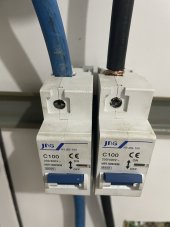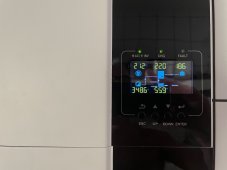Julian-Indaiatuba
New Member
- Joined
- Nov 5, 2019
- Messages
- 45
Hello, I am still fairly new to this solar stuff, so I hope this isn’t a silly question.
I have just installed a Growatt SPF 3500ES inverter to help power some appliances and to power all my lighting in my house.
It is connected to nine 335w solar panels and eight 115Ah lead acid batteries.
Everything is working pretty well, better than expected actually, however, every now and then, the lights flicker, as if the inverter has flipped a switch, or the voltage had a sudden quick dip. Sometimes this happens a few times a minute, sometimes only once or twice an hour.
I have been watching the inverter while this happens, but can’t see anything switching or any strange parameters on the little screen.
I am wondering if I will need to invest in some kind of stabilizer as to not damage some of the connected equipment in the future. I was wondering if any of you might have an idea of what could be happening or maybe already have some kind of solution.
Any help or suggestions would be greatly appreciated!
Thanks in advance.
I have just installed a Growatt SPF 3500ES inverter to help power some appliances and to power all my lighting in my house.
It is connected to nine 335w solar panels and eight 115Ah lead acid batteries.
Everything is working pretty well, better than expected actually, however, every now and then, the lights flicker, as if the inverter has flipped a switch, or the voltage had a sudden quick dip. Sometimes this happens a few times a minute, sometimes only once or twice an hour.
I have been watching the inverter while this happens, but can’t see anything switching or any strange parameters on the little screen.
I am wondering if I will need to invest in some kind of stabilizer as to not damage some of the connected equipment in the future. I was wondering if any of you might have an idea of what could be happening or maybe already have some kind of solution.
Any help or suggestions would be greatly appreciated!
Thanks in advance.
Last edited:




